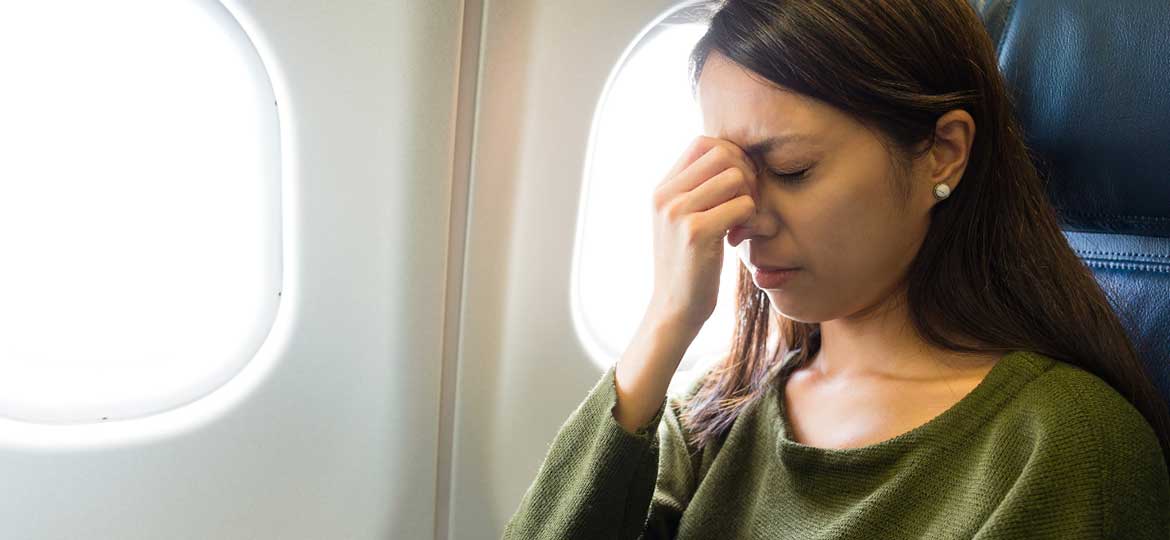Calgary Fear and Phobias Therapy and Counselling: Conquering Phobias with Professional Guidance

At our Calgary Psychologist Clinic, our therapists specialize in empowering individuals to overcome their fears and phobias. Phobias, characterized by intense and irrational fears of specific objects, situations, or activities, can significantly disrupt daily life, leading to distress and avoidance behaviors. However, effective treatment options exist, and our trained professionals are here to provide support and guidance on the journey to overcoming fears.
Our Calgary Therapists Providing Fear Therapy and Phobia Counselling
Jarret Verwimp
Clinical Canadian Certified Counsellor
English, French, Spanish (basic)
Preeti Rakhra
Registered Provisional Psychologist
English, Hindi
Andrea Krygier
Registered Psychologist
English, Spanish
Murray Molohon
Registered Psychologist
English
Nav Gill
Registered Provisional Psychologist / Clinical Counsellor
English, Punjabi
Dr. Raheleh Tarani
Registered Provisional Psychologist
English, Farsi, Japanese (basic), Hindi, Turkish, Punjabi, Urdu
Understanding Phobias: Unveiling the Root Causes
Phobias often stem from underlying triggers and experiences, and our therapists initiate the treatment process with a comprehensive assessment. Through open discussions, they delve into the origin, triggers, and associated symptoms of the phobia, fostering a deeper understanding of its impact on the individual’s life.
Treatment Approaches: Techniques for Fear Reduction
Cognitive-behavioral therapy (CBT) stands as a cornerstone in fear therapy, focusing on reshaping negative thought patterns and behaviors linked to the phobia. Collaborating closely with our therapists, individuals embark on a journey of identifying and challenging irrational thoughts, learning coping strategies, and gradually confronting their fears through exposure therapy. This gradual exposure helps desensitize individuals to the phobic stimulus, reducing anxiety responses over time.
Systematic desensitization, another effective approach, involves gradually exposing individuals to their fears while teaching relaxation techniques. By associating relaxation with the feared stimulus, individuals can gradually reduce their anxiety response, becoming better equipped to manage their phobias.
Tailored Therapeutic Approaches: Personalized Solutions
In addition to CBT techniques, our therapists may integrate other therapeutic modalities tailored to individual needs. These may include mindfulness-based strategies, hypnotherapy, or virtual reality exposure therapy, adapting the treatment approach to suit the specific phobia and the individual’s preferences.
Empowering Support: Building Resilience and Well-Being
Working with our psychologists or counselors provides a nurturing environment for individuals with phobias to explore their fears, express concerns, and track progress. Through this supportive relationship, individuals gain valuable guidance, encouragement, and tools to build resilience, develop coping mechanisms, and enhance overall well-being.
Embark on the Journey to Fearlessness
Taking the first step towards overcoming fears and reclaiming control over your life is commendable. Contact us to schedule a free consultation, where you can explore your concerns, ask questions, and discover how our tailored approach to fear therapy can help you achieve lasting transformation.
Evidence-Based Phobia Treatment: Clinical Methods That Actually Work

19 million Americans live with one or more phobias, and 22% face serious challenges that affect their daily lives. Treatment options for phobias have evolved over the last several years, but finding the right approach is vital to recovery. The gold standard in treating phobias – exposure therapy – has shown remarkable results with 80-90% of patients who finish the treatment.
Phobias affect people way beyond the reach and influence of occasional discomfort. Lifetime prevalence of 7.4% makes specific phobias one of the most common mental health disorders in the United States. Women develop specific phobias twice as often as men, and without treatment, a phobia typically lasts 20 years.
Understanding Evidence-Based Phobia Treatment
Exposure therapy leads the way in evidence-based phobia treatment as the main intervention method. Research shows that specific phobia ranks among the most common anxiety disorders. Studies indicate that between 8.3% and 13.8% of people experience it during their lifetime [1].
What Qualifies as Evidence-Based Treatment
Clinical research must prove that phobia treatments work consistently to be considered evidence-based. Exposure therapy stands out with its soaring win rates of 80% to 90% among people who complete the treatment [2]. Here are the main types of evidence-based treatments:
In vivo exposure (direct contact with feared stimuli)
Imaginal exposure (visualization techniques)
Virtual reality exposure therapy
Systematic desensitization
Measuring Treatment Effectiveness
Multiple clinical metrics help assess how well treatments work. Studies show that about 75% of individuals experience more than one phobia [1]. Treatment assessment must track both primary and secondary phobic responses. Success depends on reduced avoidance behaviors, lower anxiety levels, and better quality of life indicators.
Role of Clinical Guidelines
The American Psychiatric Association (APA) sets standard clinical practice guidelines that shape phobia treatment protocols [3]. These guidelines help create systematic patient care strategies and evidence-based recommendations. Research proves that multi-session treatments work better than single-session interventions [1]. The guidelines stress the need to customize treatment for each patient.
Types of Phobias and Their Impact
Phobias show distinct patterns, and mental health professionals recognize three main categories that affect people in different ways. These categories help shape treatment approaches.
Common Phobia Categories
The main types of phobias include:
Specific phobias: Intense fears of particular objects or situations, such as heights, animals, or flying [4]
Social phobia: Extreme anxiety in social situations where judgment or embarrassment might occur
Agoraphobia: Fear of places or situations where escape might be difficult or embarrassing [5]
Psychological Effects
Phobias’ psychological effects go beyond momentary fear. About 75% of individuals deal with multiple phobias at once [6], which creates overlapping anxiety patterns. People often experience intense fear, anxiety, and panic when they face their triggers, and this leads to feelings of helplessness and loss of control [7].
Social and Occupational Impact
Phobias can deeply affect daily life. People often know their fears are excessive, but these conditions still disrupt their education, career growth, and life quality [8]. Some people with agoraphobia become housebound [9], while those with social phobia might avoid basic activities like work or relationships. All the same, phobias can limit job choices, recreational activities, and even where someone chooses to live [4].
Traditional Treatment Approaches
Healthcare providers now use three main treatment methods that have shown consistent results after decades of clinical research and practice.
Cognitive Behavioral Therapy (CBT)
CBT is the life-blood of phobia treatment, and studies show success rates between 80-90% for patients who complete the program [10]. This approach helps patients identify and change thought patterns that trigger fear responses. CBT gives the ability to develop long-term coping strategies that help manage phobic responses.
Exposure Therapy Methods
Therapists often merge exposure therapy with CBT using several proven techniques:
In vivo exposure (direct confrontation with feared objects)
Imaginal exposure (visualization exercises)
Virtual reality exposure (computer-simulated scenarios)
Systematic desensitization (gradual exposure with relaxation)
Studies show that exposure therapy successfully treats over 90% of specific phobia cases when patients fully commit to the treatment process [11].
Medication-Based Interventions
Of course, medication supports phobia treatment and helps manage acute symptoms. Healthcare providers commonly prescribe:
SSRIs and SNRIs: These medications help prevent panic attacks and reduce anxiety symptoms [12]
Beta-blockers: Useful to manage situational anxiety, especially in performance-related phobias [12]
Benzodiazepines: Prescribed to provide short-term anxiety relief, though careful monitoring is needed due to dependence risks [12]
Medication’s effectiveness varies among patients, and doctors usually recommend combining pharmaceutical interventions with therapy to get the best results. Research shows that longer-acting benzodiazepines work better through more consistent daily coverage [12]. These medications are a valuable tool in detailed treatment plans.
Modern Treatment Innovations
Technology has brought new and innovative ways to treat phobias that make treatment more available and customized for patients. These modern approaches don’t replace traditional methods – they boost existing therapeutic techniques.
Virtual Reality Exposure Therapy
Virtual Reality Exposure Therapy (VRET) has become a resilient treatment option. Studies show patients kept positive outcomes during follow-up periods [13]. VRET showed its worth through:
Reduced behavioral avoidance with large effect sizes (d = 1.49) [13]
Sustained improvements at 1-, 12-, and 24-week follow-ups [13]
Superior results compared to progressive muscle relaxation [13]
Digital Health Interventions
Digital solutions have reshaped the scene of phobia treatment availability. Mobile-based interventions show substantial evidence in reducing anxiety symptoms [14]. These platforms offer several advantages over traditional in-person sessions:
Feature | Benefit |
|---|---|
Remote Access | Treatment delivery outside clinical settings |
Self-paced Learning | Customized progression |
Continuous Monitoring | Up-to-the-minute progress tracking |
Biofeedback and Neurotechnology
Biofeedback merged with neurofeedback creates an all-encompassing approach to phobia treatment. This combined method targets both central and peripheral nervous systems [15]. Studies reveal this integrated approach provides better therapeutic outcomes by giving immediate physiological feedback during exposure sessions [15].
New generations of these technologies have made treatment more affordable [16]. Research indicates that clinicians view these innovative approaches more favorably after trying the technology themselves [16]. This suggests growing acceptance of modern treatment methods in clinical settings.
Selecting the Right Treatment Approach
Mental health professionals need to think about many clinical factors to pick the right phobia treatment. They use well-laid-out diagnostic methods to find the best treatment plan.
Assessment and Diagnosis
Clinical guidelines set specific criteria for professional diagnosis. Mental health providers assess symptoms using detailed questionnaires and interviews [17]. Clinicians must check if symptoms have lasted at least six months before starting treatment [6]. A full picture helps them tell specific phobias apart from other anxiety disorders.
Patient-Specific Factors
Several personal factors determine the choice of treatment methods:
Symptom severity and how it affects daily life
Past treatments and their results
Other mental health conditions
Treatment priorities and access
Research shows that 75% of people have more than one phobia [18]. This means they need a detailed treatment plan.
Treatment Matching Criteria
Evidence-based results guide the treatment selection process through structured matching:
Treatment Type | Best Suited For |
|---|---|
Exposure Therapy | Single specific phobias with clear triggers |
CBT | Complex phobias with cognitive components |
Medication | Acute symptom management, situational relief |
Studies reveal that exposure therapy helps over 90% of specific phobia cases when patients fully involve themselves in treatment [10]. Success rates change based on each person’s situation and dedication to therapy.
Special Treatment Considerations
Clinical experts face unique challenges when treating complex phobia cases. Research reveals that up to 90% of patients with social anxiety disorder also struggle with other mental health conditions [19]. These multiple conditions create distinct treatment challenges that need careful attention.
Complex Cases and Comorbidities
Multiple conditions can affect treatment success in several ways:
Patients seek treatment earlier
Symptoms become more severe
Overall functioning decreases
Suicide risk rates go higher [19]
Treatment-Resistant Phobias
Some cases don’t respond well to standard treatments. Clinicians must assess these possible reasons:
Factor | Clinical Impact |
|---|---|
Overlapping Symptoms | Risk of misdiagnosis |
Multiple Diagnoses | More complex treatment needs |
Delayed Intervention | Reduced treatment effectiveness |
Age-Specific Approaches
Different life stages call for modified treatment methods. Research shows adolescents take longer to respond to exposure therapy than adults and children [20]. Here’s what matters for younger patients:
Children and Adolescents:
Developmental challenges take center stage
Neurological maturity plays a key role
Busy schedules need accommodation [20]
Older adults between 45-75 years need specialized interventions that work for their specific situation [21]. Most studies focused on younger populations until recently, which limited treatment choices for seniors. New research confirms that exposure therapy works well for older adults when adjusted for age-related factors [22].
Building a Support System
A strong support system is crucial to treat phobias successfully. Studies show that social support helps people overcome their fears better and keeps the improvements lasting [23].
Role of Family and Friends
Family members and friends are the cornerstones of phobia recovery. Research shows that support from loved ones makes exposure therapy less daunting and helps people stick with their treatment [23]. Here’s how family and friends can help:
Take the phobia seriously without judgment
Learn about the specific phobia
Stay calm during anxiety episodes
Help with appointments
Respect boundaries and recovery pace
Professional Support Network
Professional support groups are great ways to aid recovery [2]. These groups work in two main ways:
Format Type | Characteristics |
|---|---|
Structured | Guided discussions with themes |
Free-form | Natural conversation flow |
Support groups give people a chance to meet others who face similar challenges [2]. Members can share what works for them and build friendships in a safe space.
Measuring Treatment Success
Effective phobia treatment needs proper measurement of outcomes using standard assessment tools and regular monitoring. The American Psychiatric Association provides several new measures to track treatment progress and help make better clinical decisions [26].
Clinical Outcome Metrics
The Severity Measure for Specific Phobia—Adult is the main assessment tool. It uses a 10-item scale to assess phobia severity in adults 18 and older [26]. The system gives scores from 0 to 40, where higher scores mean greater severity [26]. Doctors use a 5-point scale to rate severity:
Severity Level | Score Range |
|---|---|
None | 0 |
Mild | 1 |
Moderate | 2 |
Severe | 3 |
Extreme | 4 |
Quality of Life Improvements
Patients see major improvements in many areas of their lives right after treatment. Research shows that good treatment helps patients:
Function better socially
Perform better at work
Build stronger family relationships [27]
Patients who get cognitive behavioral therapy show remarkable improvements in both their mental and physical well-being [28].
Long-term Follow-up Data
Research shows promising long-term results for phobia treatment. The survival analysis of treated patients reveals:
98% stayed in remission after 2 years
85% kept their improvements after 5 years
85% showed good results even after 10 years [29]
About 52.1% of patients report better overall quality of life after completing treatment [28]. Pre-treatment to follow-up effect sizes show substantial improvements between 0.75 and 0.92 [29]. Research suggests that patients with poor quality of life at the start often see the biggest improvements after treatment [28].
Conclusion
Patients who complete phobia treatments show amazing results. Exposure therapy helps 80-90% of people overcome their fears. CBT and state-of-the-art virtual reality exposure therapy give patients several treatment choices that match their needs.
The right treatment works well over time. Studies show 85% of patients keep getting better even 5-10 years later. These great results come from picking the best treatment by looking at how severe symptoms are, what worked before, and other health issues. Support from family and friends also improves treatment results a lot, and helps people reduce their fears permanently.
Your success in beating phobias depends on three things. You need to pick treatments that science proves work, stick to your treatment plan, and build a strong support system. Research proves that getting help early works better, so you should talk to a professional as soon as you notice phobic symptoms.
New technology and better therapy methods bring hope to millions of people with phobias. These new developments work together with tried-and-true methods to create a complete system that helps people manage and recover from phobias.
FAQs
Q1. What is the most effective treatment for phobias? Exposure therapy is considered the gold standard for treating phobias, with success rates of 80-90% among patients who complete the treatment. This approach involves gradually exposing individuals to their feared objects or situations in a controlled environment.
Q2. How long does it typically take to overcome a phobia with treatment? The duration of phobia treatment varies depending on individual factors. However, studies show that many patients experience significant improvements within 8-12 weeks of consistent therapy. Long-term follow-up data indicates that 85% of treated individuals maintain improvements even after 5-10 years.
Q3. Can virtual reality be used to treat phobias? Yes, Virtual Reality Exposure Therapy (VRET) has emerged as an effective modern treatment for phobias. Research shows that VRET can lead to reduced behavioral avoidance and sustained improvements in patients, offering a safe and controlled environment for exposure therapy.
Q4. Are medications effective in treating phobias? Medications can play a supporting role in phobia treatment, especially for managing acute symptoms. SSRIs, SNRIs, beta-blockers, and benzodiazepines are commonly prescribed. However, they are typically most effective when combined with therapy rather than used as a standalone treatment.
Q5. How important is social support in phobia treatment? Social support is crucial for successful phobia treatment outcomes. Studies show that support from family, friends, and support groups can enhance fear extinction, reduce treatment drop-out rates, and lead to lasting reduction of fear. Building a strong support system is considered an integral component of effective phobia management.
References
[1] – https://pmc.ncbi.nlm.nih.gov/articles/PMC7001348/
[2] – https://www.verywellmind.com/an-overview-of-phobia-support-resources-2671960
[3] – https://www.psychiatry.org/psychiatrists/practice/clinical-practice-guidelines
[4] – https://www.health.harvard.edu/a_to_z/phobia-a-to-z
[5] – https://www.hopkinsmedicine.org/health/conditions-and-diseases/phobias
[6] – https://my.clevelandclinic.org/health/diseases/24757-phobias
[7] – https://www.mind.org.uk/information-support/types-of-mental-health-problems/phobias/symptoms-of-phobias/
[8] – https://www.verywellmind.com/psychological-and-emotional-effects-of-phobias-2671693
[9] – https://www.nhs.uk/mental-health/conditions/phobias/symptoms/
[10] – https://www.mayoclinic.org/diseases-conditions/specific-phobias/diagnosis-treatment/drc-20355162
[11] – https://my.clevelandclinic.org/health/treatments/25067-exposure-therapy
[12] – https://emedicine.medscape.com/article/288016-medication
[13] – https://pmc.ncbi.nlm.nih.gov/articles/PMC7096216/
[14] – https://pmc.ncbi.nlm.nih.gov/articles/PMC8501502/
[15] – https://www.frontiersin.org/journals/neuroscience/articles/10.3389/fnins.2024.1358481/full
[16] – https://www.frontiersin.org/journals/psychology/articles/10.3389/fpsyg.2021.671871/full
[17] – https://www.merckmanuals.com/professional/psychiatric-disorders/anxiety-and-stressor-related-disorders/specific-phobias
[18] – https://pmc.ncbi.nlm.nih.gov/articles/PMC7233312/
[19] – https://pmc.ncbi.nlm.nih.gov/articles/PMC6448478/
[20] – https://psychiatryonline.org/doi/10.1176/appi.ajp.2015.14081061
[21] – https://www.uq.edu.au/news/article/2004/05/anxious-or-fearful-uq-can-help
[22] – https://pmc.ncbi.nlm.nih.gov/articles/PMC2685257/
[23] – https://pmc.ncbi.nlm.nih.gov/articles/PMC8298022/
[24] – https://dmh.lacounty.gov/about/behavioral-health-commission/resources/
[25] – https://www.mentalhealthfirstaid.org/2020/08/the-importance-of-having-a-support-system/
[26] – https://www.psychiatry.org/File Library/Psychiatrists/Practice/DSM/APA_DSM5_Severity-Measure-For-Specific-Phobia-Adult.pdf
[27] – https://psychiatryonline.org/doi/10.1176/appi.ajp.157.5.669
[28] – https://pmc.ncbi.nlm.nih.gov/articles/PMC9798124/
[29] – https://www.researchgate.net/publication/11883381_Long-term_outcome_of_social_phobia_treated_by_exposure
Calgary Counselling And Psychologist Services
Our Calgary Psychologists and therapists offer counselling and formal psychological assessment services for individuals, couples, and families. We tailor these services to meet the unique needs of each client. Our goal is to support our clients in achieving their personal and relational goals.
We help families improve communication and solve problems. We also offer assessments for learning disabilities and ADHD. Our support extends to various mental health issues. Our support covers many mental health issues.
Our therapists dedicate themselves to providing a safe and supportive environment for clients of all ages and backgrounds. They help clients explore their thoughts, feelings, and experiences. The team is committed to creating a space where clients can feel comfortable and understood. They strive to help clients on their journey towards healing and growth.
We are here to help with individual therapy, couples counseling, or support for your child, teen or family. We offer counseling services in person and virtually. This makes it convenient and flexible for our clients to access our services. Whatever challenges you may be facing, we are committed to guiding you towards healing, growth, and greater well-being.

























Finding a Psychologist or Counsellor that can help you clear your mind and find more inner peace doesn't have to be difficult. Because the therapeutic relationship is so important, we offer a Free Consult. Text or Call Today and get yours!
Find Peace of Mind with a Calgary Psychologist or Counsellor That Understands Your Needs
Contact UsCalgary Therapy Mental Health Issues
In our Calgary counselling clinic, we help with many mental health problems. Our therapists can assist with a range of issues. These include grief, trauma, anxiety, depression, parenting challenges, PTSD, eating disorders, postpartum depression, fears and phobias, ADHD, self-esteem issues, relationship difficulties, OCD and many more.
No matter what you’re dealing with, our therapists are here to provide evidence-based therapy that fits your needs. We want to help you overcome challenges, build resilience, and find more happiness and fulfillment in your life.



























